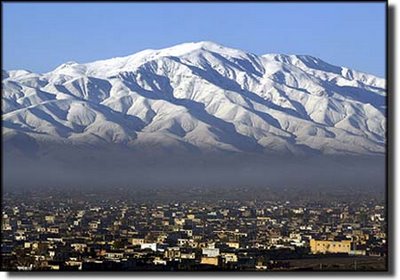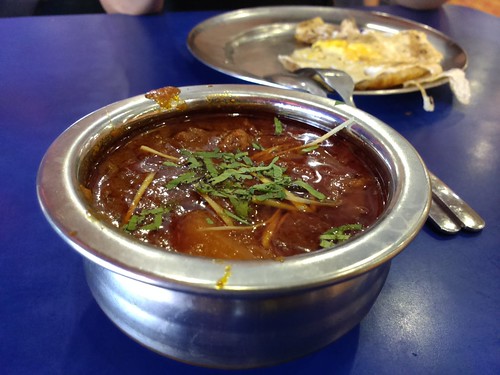It was another eventful weekend in the Antarctic where teams continue to struggle with their individual goals. For some of the South Pole skiers it marked a shift in goals and expectations, for others it was a reaffirmation to stay focused on the tasks ahead. For everyone it was reminder that Antarctica is a beautiful, yet harsh and demanding place that will test you at every turn.
The biggest news to come out of the weekend is the end of the "race" that was an important aspect of the
2013 South Pole Allied Challenge. As you may recall, three teams of skiers – Team UK, Team USA, and Team Commonwealth – were all racing one another over the last three degrees to the South Pole. Each of the teams had experienced polar guides leading the way, but for the most part they were made up of men and women who were injured in the line of duty and were now attempting to raise funds and awareness for the
Walking With The Wounded program. On Saturday, the teams reached their first checkpiont and had a mandatory 24 hour rest period. At that time the decision was made to put an end to the race in order to ensure the safety of those participating. For those uninitiated to the Antarctic, the pace of the race was grueling and was making things more difficult than anyone had anticipated. So, the leaders agreed to end the competition. That doesn't mean the adventure is over however, as they will all continue to ski on to the South Pole. They'll just do so at a more measured pace that will hopefully ensure that they all reach 90ºS in a timely and safe manner.
Richard Parks remains in his race against the clock however as he struggles to attempt to set a new speed record to the South Pole. He's now five days into his restart, and while he's making good time, it hasn't been easy. Soft snow is causing him to make slower than expected progress and as of Saturday he was still 1051.9 km (655 miles) from his goal. Obviously since then he has managed to knock off more distance, but just how much remains to be seen. Parks hasn't updated us on his progress since then, but he has been covering about 33 km (20 miles) per day, which quite frankly isn't fast enough to break the record. Things should get better once he tops the Antarctic Plateau however, and if he can put the soft snow behind him it'll help too.
Parker Liautaud and Doug Stoup have launched the skiing portion of their
Willis Resilience South Pole expedition. After spending the first week and a half of the journey driving around the Antarctic in a specially modified vehicle, collecting environmental data and core samples of the ice, they will now begin their attempt to ski to the South Pole with an eye on doing so in record time as well. They're hoping to complete the journey from the Ross Ice Shelf in just 22 days, although their distance will be much shorter than Richard Parks, who is making a full ski journey from Hercules Inlet. His expedition will cover more than 1150 km (715 miles), while Parker and Doug list their route as 640 km (397 miles).
Liautaud was also hoping to become the youngest man to ski to the South Pole but it looks like he may get trumped in that regard as well.
Lewis Clarke, the 16-year old from the UK, continues to make good progress on his own expedition to the bottom of the world. While he still has more than 655 miles (1054 km) to go, and a lot can happen over that distance, he is doing well so far. Yesterday, Lewis and his guide Carl Alvey knocked off a respectable 15.1 miles (24.2 km), which is a solid pace for six days into the journey. It's not going to get easier this week however, as the forecast calls for gale force winds to arrive in the next day or two. That will certainly change the dynamic of the expedition.
South Pole cyclists
Daniel Burton is finding it hard going, although he did manage to cover 15.5 miles (24.9 km) on Saturday, which is his best day yet. He indicated that the pace is slower than he had expected and that he'll need to pick things up soon if he wants to make a serious run at reaching the Pole on his fat tire bike. He says that his sleds are simply too heavy, but he has a plan to redistribute the weight some that he hopes will start paying dividends as early as today. There is a bit of hope that things are improving however, as Burton noted that it is getting easier to ride than to hike-a-bike, which he has done a lot so far as he works his way up to the Plateau.
Finally, Ben Saunders and Tarka L'Herpiniere, collective the
Scott Expedition team, are continuing to struggle with progress on the Beardmore Glacier. They have left the snow behind for now while they deal with hard, smooth and dangerous blue ice instead. In order to deal with those conditions, they've swapped their skis for crampons, although progress remains slow. It may be hard to believe, but the boys have now been out on the ice for more than 45 days, and yet they still have a long way to go on their attempt to complete Robert Falcon Scott's route to the South Pole and back to the coast again. As of yesterday, they still had 1257 miles (2022 km) to go before they are done. Hang in their lads!
That's all for today. More from the Antarctic soon I'm sure.










